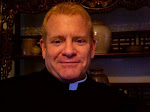Fr.
Tony’s Midweek Message
Faith
and Living as Resurrection People
April
15, 2015
“Am
I a bad person if I don’t believe these Easter stories?” “How much of the Creed must I
believe?” Parishioners at different
times have asked me these questions.
I try always to remind them that the Creed is aspirational,
a
statement of hope and where our concerns lie, not a loyalty oath or measure of
worthiness. In this beautiful season of Spring and
Eastertide, it is important to remember a couple of basic things about what
faith and belief are.
Faith
is not about explaining stuff. Faith
is not about defining things. It is
not about techniques to control things or on how to get ahead. It is about trust, about openness. It is an orientation of the heart, not a
content of opinions or positions we subscribe to, or even rules of technical
mastery or of success.
When
we say “I believe in God,” we are not saying, “I am of the opinion that an
entity referred to as God exists.”
The word believe, though it now
usually means “hold as true,” actually is related to the old Germanic word for
heart, Lieb, and it means “give my
heart to.” As Professor Marcus Borg
often said, we might better use the word “belove” rather than “believe.”
“I
believe in God” actually means something like, “I trust God,” or even, “within
God, in relationship with God, I love for all I’m worth.”
This
is clear when we look at one of the other lines of the Creed, “I believe in the
… Church.” We are not saying, “I
believe the Church exists,” but rather, within the context of the Church, within
the embrace of its loving community, I love for all I’m worth.”
How
can we believe in God, especially
when God, both in history and in many of our personal lives, has been so misused
as a tool of control and abuse?
Faith
is about wonder. It is about
trust. It is about hope, having an
ultimate optimism that all will finally be well, despite the risk, horror, and
darkness that seem to be so much a part of life. It is not wish fulfillment, as Freud
tried to explain. The
orientation of the heart we call faith or belief, is tied up part and parcel with
story, narrative, song and ritual. It is a transcendental way of processing
our life experience and giving us a sense of meaning and value.
The
fact is, metaphor is the basic idiom of the language of faith. One of the great Theologians of the
Church said it was “the analogy of being.” These stories we tell are ways not to
explain how things happen, but point beyond the how and details or process to meaning, to the ultimate
“why.”
Incarnation
and resurrection: two sides of the
same coin. Light shines in the
darkness, God takes on all that it means to be human, including dying
unjustly. And then, against all
expectations, the dead Jesus comes to newer, fuller, more lively life. These images point to the basic experience we
have of God rescuing us from all that is the matter, whether ignorance,
loneliness, failings, guilt, addictions or obsessions, or ill health.
This
does not mean that faith language is not true, or doesn’t say what it seems to
say. It means that if we reduce it
to mere proposition or opinion, and take it merely as literal, it ceases to be
the language of faith. It loses the wonder.
It becomes a dead thing, stale, and utterly unable to move us or give us
hope. No surprise that literalistic or
overly dogmatized readings of faith language generally repel people and turn them
away from the hope that is God.
Our
basic hope in the meaning and sense of human life is expressed in the
acclamation: “Christ is risen! The Lord is risen indeed! Alleluia!”













No comments:
Post a Comment